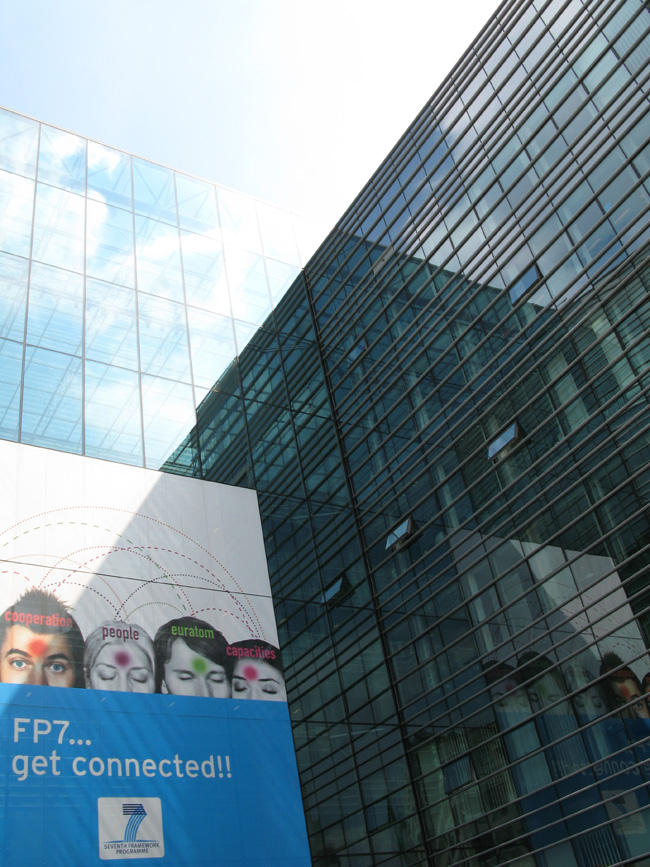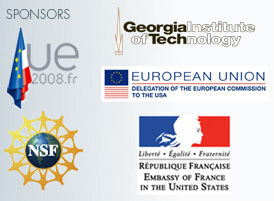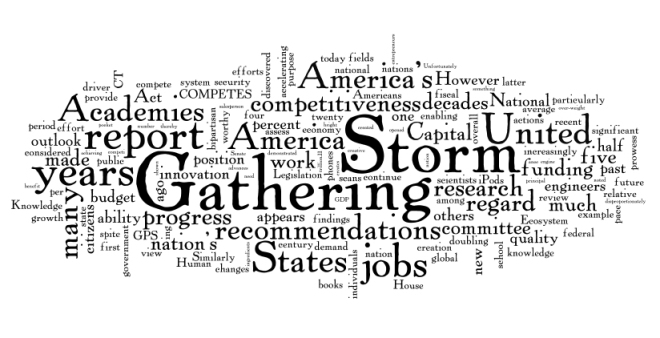Over the course of the last several years, it has become abundantly clear that the people guiding the future-oriented development strategies of many universities, virtually all national funding agencies, and most ministries of higher education and research (or equivalent), are seeking to facilitate the creation of global research imaginations and networks. This is a theme we have incrementally addressed in GlobalHigherEd, including in ‘Globalizing research: forces, patterns, and collaborative practices’. Since this 4 August 2008 entry was posted, Brandeis University kindly let us know about a related event (a 2008 symposium titled ‘The Global: Implications for Research and the Curriculum‘), which highlights one of the more exemplary examples of rethinking underway right now at the university level.
A global research imagination, and its associated research practices and networks, are posited to enable ‘global challenges’ to be addressed, to bring together complimentary expertise (which is not always distributed evenly across space), and to facilitate greater innovation in the research process. The forging of global research networks also enables ties to be created, maintained, or perhaps rekindled; a process that ostensibly brings concepts like ‘brain circulation’, versus ‘brain drain’, to life, as well as geographically dispersed virtual communities.
 A new Strategic European Framework for International Science and Technology Cooperation
A new Strategic European Framework for International Science and Technology Cooperation
It is in such a context that we need to view the European Union’s 29 September 2008 Communication, titled A Strategic European Framework for International Science and Technology Cooperation. For the non-European readers of this entry, a Communication is a paper produced by the European Commission (EC), most often to the key institutions (e.g., Council of the European Union or the European Parliament). It is generally the outcome of a series of initiatives that might follow this sequence: the production of (i) a staff working paper, (ii) the development of a consultation paper that asks for wider inputs and views, and then, if it keeps proceeding it is in the form of (iii) a Communication. The decision to move to this stage is generally if the EC thinks it can get some traction on an issue to be discussed by these other agencies. This is not the only pattern or route, but it does register that issue has wider internal EC backing (that is in the nerve centres of power), and a sense that it might get traction with the Member States.
These forms of ‘white paper’ style policy documents are fascinating, but sometimes challenging to make sense of given all of the messages they need to convey. One vehicle to do so is to simply identify the sections and subsections for they themselves send out a message about what really matters. In the case of this 14 page long Communication, we see the following structure presented:
Key strategic goal for international cooperation in science and technology and universal access to ICTs
1. PRINCIPLES UNDERLYING THE EUROPEAN FRAMEWORK FOR INTERNATIONAL S&T COOPERATION AND THE NEW INFORMATION SOCIETY PARTNERSHIPS
Widening the ERA and making it more open to the world
Ensuring coherence of policies and complementarity of programmes
Fostering strategic S&T cooperation with key third countries
Developing the attractiveness of Europe as a research partner
Launching results-oriented partnerships on information society regulation
The European Community and Member States working together
2. ORIENTATIONS FOR ACTION TO MAKE THE ERA MORE OPEN TO THE WORLD
2.1. Strengthening the international dimension of the ERA
• Integrating Europe’s neighbours into the ERA
• Fostering strategic cooperation with key third countries through geographic and thematic targeting
2.2. Improving the framework conditions for international S&T cooperation
• Tackling scientific challenges through global research infrastructures
• Mobility of researchers and global networking
• More open research programmes
• Intellectual Property Issues
• Pre-standardization
3. IMPLEMENTING A SUSTAINABLE PARTNERSHIP
 The Communication, which is designed to help advance the development of the European Research Area (ERA), speaks to Member and Associated States, but also the rest of the world. This said, it is our sense that the core audiences of this document are Member States, which are being asked to work with the Commission in a much more coordinated manner, and select countries that have a significant presence in the global research landscape.
The Communication, which is designed to help advance the development of the European Research Area (ERA), speaks to Member and Associated States, but also the rest of the world. This said, it is our sense that the core audiences of this document are Member States, which are being asked to work with the Commission in a much more coordinated manner, and select countries that have a significant presence in the global research landscape.
While this is not the place to outline the historical path that led to the creation of the Communication, it is important to note that it was developed in the aftermath of:
- The emergence (2000), review, and relaunch (2005) of the Lisbon strategy, all of which provide impetus and traction for a more expansive research imagination and development agenda;
- A broad 2007-2008 consultative process to rethink the ERA, some seven years after it was formally established in 2000 (readers interested in this consultative process should see this site, and the associated Green Paper, for further details).
The Communication also ties into related initiatives that we have profiled on GlobalHigherEd, including the so-called “Fifth Freedom” (see ‘Mobility and knowledge as the “Fifth Freedom” in Europe: embedding market liberalism?’), and is a follow up, of sorts, to the 2006 Commission Communication “Towards a Global Partnership in the Information Society” and the public consultation launched in July 2007 regarding how to open up new global markets for Europe’s ICT industry.
Now, the broad tenor of this well crafted Communication is in some ways nothing new. For years the EU has sought to facilitate a global research imagination, and enhance researcher mobility and expansive networks. Related initiatives like ERA-Link have been developed to forge ties with the many expatriate European researchers who reside around the world, especially in countries like the US. But, and this is a key but, the Communication deepens and refines thinking about how to build a global research imagination, and extend research networks:
- inside Member States;
- out to “Neighbouring countries” to build a “broader ERA”;
- out to “Developing countries” to build “S&T capacity, sustainable development, global initiatives”, and
- out to “Industrialised” and “emerging economies” to enhance “mutual benefit” and better address “global challenges”,
all of which theoretically provides feedback loops that simultaneously build the ERA and Europe’s standing in the global research landscape. It is not for nothing that Brussels released a summary of the Communication titled ‘Putting Europe high on the global map of science and technology: Commission advocates new international strategy‘ (24 September 2008).
While many elements of the Communication are worth noting, we will only focus on one right now – the principle of reciprocity. In a subsequent entry we will focus on the issue of how such region-derived frameworks for international science and technology cooperation generate structural pressure on less-developed countries to create supra-national regional structures when engaging about such issues.
 The principle of “reciprocity”
The principle of “reciprocity”
What this means is that the EU will actually open up its research largesse to non-Europeans if their funding agencies do the same, subject to negotiations that end in consensus. As the Communication (p. 13) puts it:
EC bilateral S&T agreements are based on the principles of equitable partnership, common ownership, mutual advantage, shared objectives and reciprocity. While these principles have not always been fully implemented, reciprocal access to research programmes and funds should be pursued to enhance the mutual benefit of international S&T cooperation. FP7 [Seventh Research Framework Programme] is open to third country partners. Funding is normally limited to participants from international cooperation partner countries. However, since open competition promotes excellence in research, funding for collaborative projects could be extended to include research organisations and researchers located in industrialised third countries where reciprocal funding is made available for European researchers.
The University of Wisconsin-Madison, for example, received a 30 September notice that profiled the new Communication. In this notice, the Delegation of the European Commission in Washington DC stated:
US research teams are eligible to receive EC funding when the research component is deemed essential for the success of the project.
This is a significant shift in policy and especially practice. And while the specific details of what “reciprocity” means remain to be formally developed, it highlights a willingness to use material resources to create and/or deepen new transnational research networks. Thus foreign researchers, and research teams, will be enrolled in European networks much more easily. Yet, it is also important to be cognizant that the criteria underlying the granting of access to said monies are first and foremost those of an intellectual nature, and only if the EU views the projects to be associated with strategically important themes/sectors. It is also worth noting that the elevation of reciprocity enables the European Commission to create Europe-led virtual research teams; a strategy that helps overcome the ongoing challenges of creating the Blue Card scheme in Europe, a scheme somewhat similar to the US’ Green Card (a card Kris holds, which grants permanent residence, and virtually all rights except for voting). In other words, this initiative weaves together intellectual and labour market logics in some creative and realpolitik ways given intra-European debates about immigration and mobility (even of skilled labour).
In closing, A Strategic European Framework for International Science and Technology Cooperation is a strategy document that seeks to enhance international cooperation in science and technology, and thereby facilitate the creation of a global research imagination and associated research practices. “Strategic cooperation” with third countries, this said, needs to be enhanced through much more that fashioning frameworks: cooperation needs to be brought to life at a range of levels, and in a variety of forms, and this involves bodily presence and face-to-face.
 One mechanism to do so is the sponsorship of policy dialogues. One of us will be attending such a dialogue – the EU/US Research and Education Workshop: Internationalization of Research and Graduate Studies and its Implications in the Transatlantic Context – which will be held in Atlanta Georgia on 17-18 November. This workshop will deal with a range of transatlantic development topics, including the new framework, the Global Dimensions of the Bologna Process, and other related issues.
One mechanism to do so is the sponsorship of policy dialogues. One of us will be attending such a dialogue – the EU/US Research and Education Workshop: Internationalization of Research and Graduate Studies and its Implications in the Transatlantic Context – which will be held in Atlanta Georgia on 17-18 November. This workshop will deal with a range of transatlantic development topics, including the new framework, the Global Dimensions of the Bologna Process, and other related issues.
 Workshops such as these get the word out about the various dimensions of new frameworks, and build trust and mutual understanding between stakeholders about opportunities for cooperation.
Workshops such as these get the word out about the various dimensions of new frameworks, and build trust and mutual understanding between stakeholders about opportunities for cooperation.
In the light of Barack Obama’s recent election, and abundant evidence of European support for him at the end of eight years of strained Europe/US relations, it will be interesting to see how the discussions unfold. The US is, after all, a key element of the global research landscape; one of the few countries with capacity to create the so-called “global research infrastructures” that are needed for “major scientific advances”. Yet this is also a time of considerable financial turmoil on both sides of the Atlantic, and the new fiscal austerity realities that will inevitably emerge cannot help but dampen the euphoria that is sure to be in evidence.
In an experiment of sorts, an attempt will be made to provide some insights about the deliberations in Atlanta. For now, though, take a read of A Strategic European Framework for International Science and Technology Cooperation, for it is an important document that reflects new thinking about the logics and strategies associated with furthering collaboration across space; collaboration that, the Commission hopes, will put Europe “high on the global map of science and technology”.
Additional links
Kris Olds & Susan Robertson


























